|
mRNA Livestock Feed
We know that the mRNA vaccines used by Pfizer and Moderna
produce spike proteins that do not seem to have an off switch.
Two years ago in March, 2021 this
danger was not yet known, but President Trump had recommended
the Zelenko Protocol. The mRNA
vaccines were using a new
technique not previously used on humans. The main
issue seemed to be that by pretending to be a spike protein from
the virus, and incorporating this into the immune system, the
vaccine has started an immune response that would not be turned
off.

By mid-2021 America’s Frontline
Doctors and a Nobel Prize winner Luc Montagnier were issuing
concerns about the Spike Protein causing a type
of AIDS due to an exhausted immune system, known as the
ADE cycle. The death charts showed an exploding death rate from
Covid-19 after vaccination which did indeed peak again after
subsequent vaccinations. The spike protein seemed to be
perpetual as it embeds into the Messenger System.
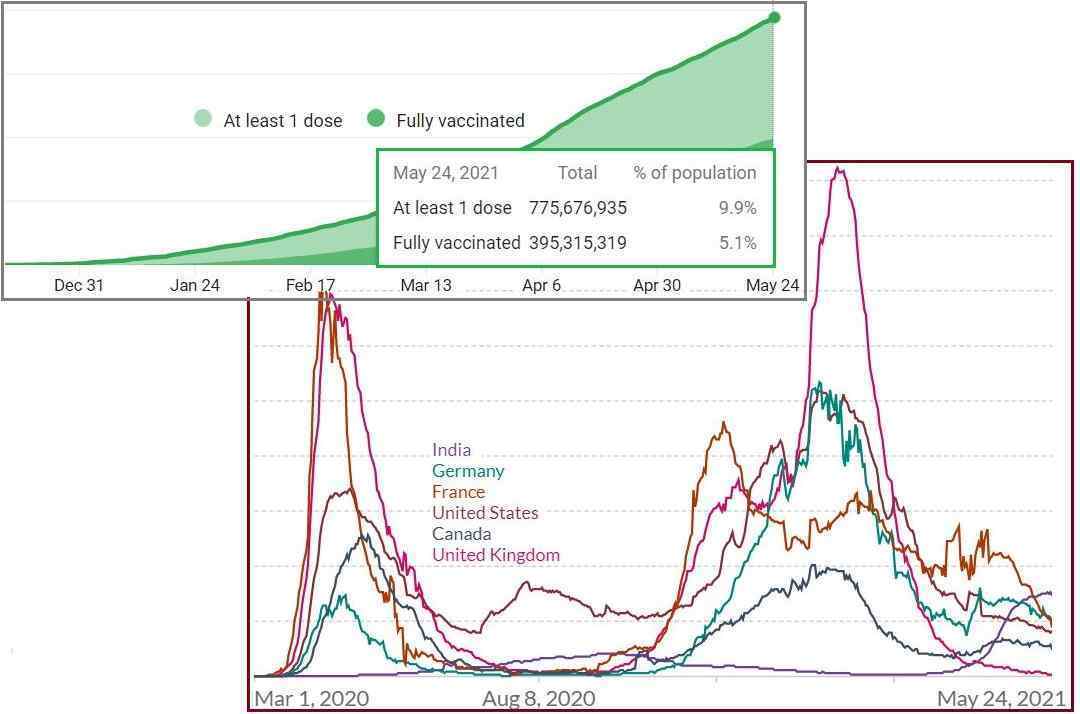
ZetaTalk Confirmation 10/31/2021: During
an ADE invasion of the immune system, eventually, the immune
system recovers. Immune cells replicate and a cleanup of virus
pieces occurs. The mRNA vaccines slow this process because
they generate spike protein pieces. Thus repeated booster
shots with the mRNA vaccines perpetuate the ADE reaction. We
mentioned early in these discussions that a worry
was exhausting the immune system because the mRNA
starts a process that does not have an off switch. This has
now been well documented. This constant activation of an
exhausted immune system can also incite auto-immune
reactions.

Statistics showed that Covid-19 was nothing more than the flu
and that those countries like Sweden which simply waited until
herd immunity became established quickly went back to normal
without the need for masks or lockdowns. But Pfizer wanted their
profits. Now mask and vax passport demands seem to be a thing of
the past, and even workers who had been fired for refusing the
vax are being asked to return to their jobs. But the vax
industry still wants their profits from their mRNA research. Now
a new danger has emerged in plans for livestock feed. Is this
safe? The Zetas say “Hell NO”.
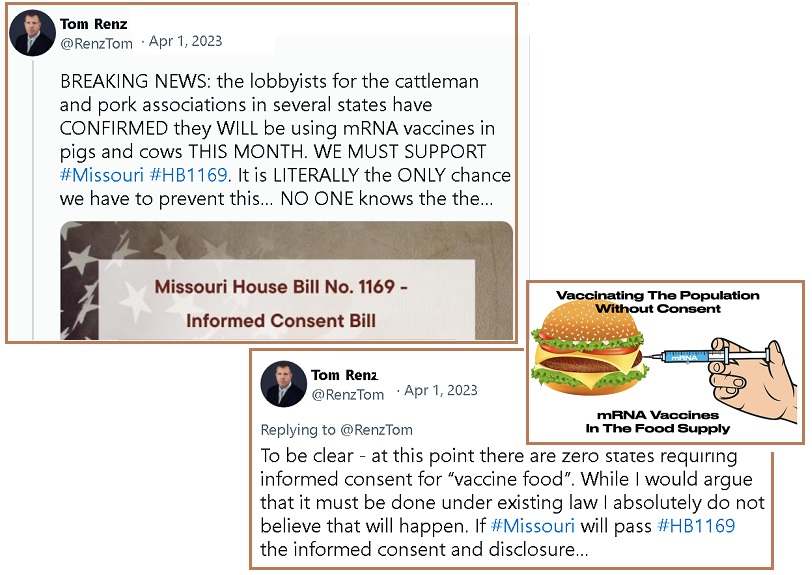
- mRNA Going into Cows and Pigs
April 1, 2023
https://halturnerradioshow.com/index.php/en/news-page/
- The food supply of every American
is going to start being intentionally poisoned with mRNA
genetic modifications being fraudulently called
"vaccines." There is an article from the year 2000
about "edible vaccines". The article demonstrates
how hiding a "vaccine" in foods, is absorbed into the
body: The trouble with this particular circumstance
is that, to this day, no manufacturer of an mRNA vaccine,
has fully disclosed the medically-active contents of the
so-called "Covid "vaccines."
- mRNA Vaccines Going into Cows and Pigs
This Month
April 3, 2023
https://dainikbidyaloy.com/2023/04/03/mrna-vaccines-going-into-cows
- Lobbyists for the cattleman and
pork associations in several states have confirmed they
will be using mRNA vaccines in pigs and cows this month.
It will actually become “vaccine food” and sold to you
without your informed consent.

- Edible Vaccines
September, 2000
https://research.mcdb.ucla.edu/Goldberg/HC70A_W06/pdf/EdibleVaccines
- Would plants engineered to carry
antigen genes produce functional copies of the specified
proteins? When the food plants were fed to test animals,
would the antigens be degraded in the stomach before
having a chance to act?
- Tissue Distribution of a Peptide
Transporter mRNA in Sheep, Dairy Cows, Pigs, and Chickens
May 1, 1999
https://academic.oup.com/jas/article-abstract/77/5/1277/4625493
- In sheep (n = 5) and lactating
Holstein cows (n = 3), hybridization was observed with
mRNA from the omasum, rumen, duodenum, jejunum, and ileum.
No hybridization was observed with mRNA from the abomasum,
cecum, colon, liver, kidney, and semitendinosus and
longissimus muscles of either species or the mammary gland
of the dairy cows. In pigs there was no hybridization with
mRNA from the stomach, large intestine, liver, kidney, and
semitendinosus and longissimus muscles. In White Leghorns
(n = 15) and broilers (n = 20), the strongest
hybridization was found in the duodenum, but the jejunum
and ileum showed faint bands. Other tissues,
including the crop, proventriculus, gizzard, ceca, liver,
kidney, and muscles showed no hybridization to the probe.
- mRNA Vaccine Cannot Transfer through
Meat Consumption
January 26, 2023
https://factcheck.afp.com/doc.afp.com.337U7PW
- In livestock, there are no mRNA
vaccines that are used in the United States. The Center
for Veterinary Biologics at the US Department of
Agriculture's Animal and Plant Health Inspection Service
Center told AFP that, as of January 2023, it did "not have
any vaccines approved or under trial to vaccinate
livestock for Covid-19." There is a bit more
potential transfer of disease between humans and chickens
or pigs as they are more similar to us. A good example
would be avian or swine flu. There are vaccines used in
livestock for these diseases but none in commercial use
are mRNA-based. There is no scientific basis for the claim
that if someone was to consume meat or other tissues from
an animal that had been vaccinated with an mRNA vaccine,
it would enter their body. The digestive tract is designed
to break down the large molecules in our food - including
DNA, proteins and carbohydrates - so we can absorb them.
ZetaTalk Warning
4/5/2023: If
sheep, pigs, chickens and cows are injected with an mRNA
vaccine or fed this as in ingredient in food will this mRNA
spike protein transfer to the parts of these animals to be
consumed by humans? Yes. A 1999 study showed that even when
consumed as food by the livestock, its stomach (peptide)
process did not prevent the spread of the mRNA spike proteins,
(hybridization). Despite the horror stories from the Covid-19
mRNA vax, where immune systems in humans have plunged and
lovers are afraid to hug due to the possible transmission of
spike proteins, the pharma industry wants their profits.
This trend to use the mRNA
methodology in livestock should be aggressively countered. We
have suggested that suburban or even urban families keep
chicken flocks, which can eat kitchen scraps and free range
for insects. Goats likewise can browse on weeds and bushes and
give clean milk and meat. This maneuver by the pharma industry
should be a wakeup call to those who would be self-sufficient
survivors. The time for action is now!
Nibiru Excuses
Was the Aurora blitz seen in late March from a “stealth” CME as
NOAA claims? At the start of the ZetaTalk saga the Zetas
predicted that the establishment would blame
the Sun rather than admit that Nibiru exists. And after
Blaming the Sun, the favorite excuse this past month was to
blame Global Warming. Supposedly a “stealth” CME caused a
magnetic storm on Earth, and Global Warming is responsible for
the increase in lightning.
- Strongest Solar Storm in nearly 6
Years Slams into Earth Catching Forecasters by Surprise
March 24, 2023
https://www.space.com/strongest-solar-storm-nearly-6-years
- The powerful solar storm
supercharged auroras as far south as Colorado and New
Mexico. The most powerful solar storm in nearly six years
slammed Earth today (March 24), but strangely, space
weather forecasters didn't see it coming. The geomagnetic
storm peaked as a severe G4 on the 5-grade scale used by
the U.S. National Oceanic and Atmospheric Administration
(NOAA) to assess the severity of space weather
events. Geomagnetic storms are disturbances
to Earth's magnetic field caused by solar
material from coronal mass ejections (CME) —
large expulsions of plasma and magnetic field from
the sun's atmosphere. It turns out that this
particular geomagnetic storm was triggered by a "stealth"
CME which — as the name suggests — is rather tricky to
detect.
ZetaTalk Comment
3/24/2023: We
predicted decades ago that the establishment would Blame the
Sun for many manifestations of Nibiru. EMP has increased and
for a time the establishment has been able to match EMP
episodes with some activity in the Sun, but this became
increasingly difficult as their CME warnings were forced to be
issued after the fact. For the establishment, which measure
all manner of emissions from the Sun with their probes and
satellites and closely watch the appearance of the Sun, it is
an embarrassment to blame a G4 “stealth” CME. What’s next,
mischievous Sun Elves?
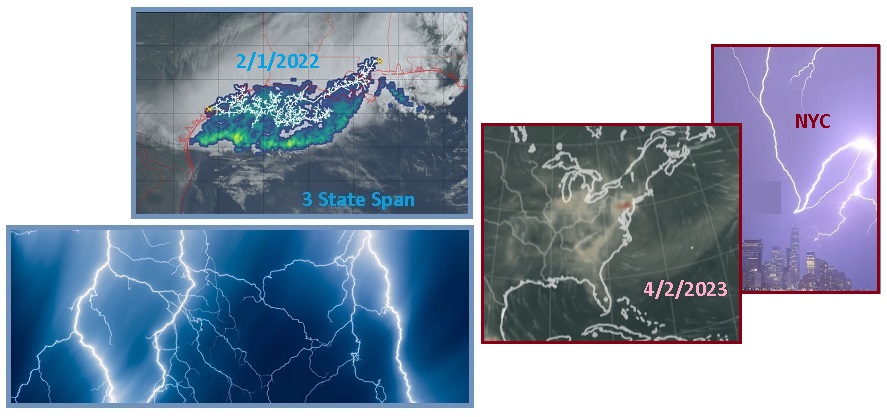
- Global Warming could Lead to Increase
in 'Hot Lightning' Strikes causing more Wildfires
March 1, 2023
https://phys.org/news/2023-03-global-hot-lightning-wildfires
- A combined team of Earth
scientists from multiple institutions has found evidence
that suggests that in the coming years, a warming planet
could lead to more "hot lightning" strikes that could
cause more wildfires in many parts of the world. Computer
simulations showed higher frequency as the atmosphere
warms.
- Huge Record-Breaking Lightning Bolt
Spans 3 U.S. States
February 1, 2022
https://mashable.com/article/worlds-longest-lightning-bolt
- The longest single flash of
lightning has been captured by satellites of the National
Oceanic and Atmospheric Administration.
ZetaTalk Comment
4/5/2023: We
have repeatedly warned that as the charged tail of Nibiru
sweeps the Earth, coming ever closer, that EMP and associated
lightning storms will be on the increase. Plate movement is
also on the increase due to the Daily Earth Wobble caused by
Nibiru’s approach. Thus electronic
screech from rock compressed so that electron particles
can flow freely through the rock will also be on the
increase. Arcing between the screeching rock and the
charged tail of Nibiru of course will follow.
Just as AF447
had complete electronic failure in 2009, dropping into the
Atlantic as the plane passed over the Mid-Atlantic Rift, and MH370 disappeared from radar in
2014, in like manner a 3-state lightning bolt crossed the Gulf
in 2022 due to the N American Portions pulling apart. New York
City is showing signs of ripping apart as the SE Portion is
tugged to the East during the New Madrid Adjustment. This is
where the Ramapo and East Coast Fault Lines join.
Saving Seed
Stocking food is not enough! You need to be prepared to
grow and gather your own, and most importantly, you need to know
how to save seed. Get a good book on this, such as Seed to
Seed, and practice. Mother Nature wants her seeds dry and
cool, so most seed only needs that preparation and protection.
Many seeds will not spout unless gathered from a ripe fruit, so
those peppers and squash and melons should be ripe before
harvesting. Very ripe, almost to the point of rotting. Tomatoes
too, need to have white mold eat away their slime, or the seed
thinks it is still in the tomato and simply won’t sprout!
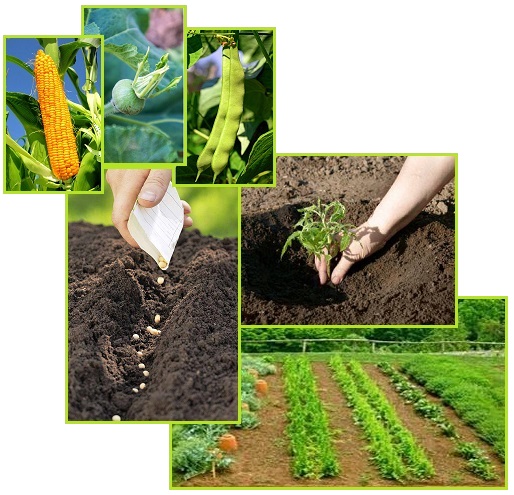
Propagating annuals like lettuce or Corn or Beans is relatively
easy. Just set aside a portion of your crop for seed production,
letting it fully mature, and collect the dry seeds. But half our
food supply comes from biennials, like Cabbage and Onions and
Carrots, which insist on sleeping over during a dormant period
before going to seed. Some edibles only require establishing a
perennial patch, like Asparagus or Berries or planting an Apple
tree. Let’s start with the easy ones.
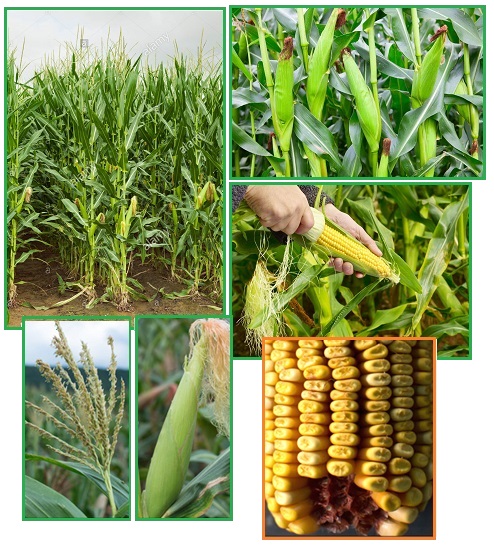
Corn kernels are perhaps the easiest to harvest. All one needs
to do is let a couple stalks of Corn live on past harvest time,
until the Corn dries fully. The dryer the better. Farmers check
their Corn fields for this, as they don’t want moldering Corn in
their silos nor do they want the expense of drying it indoors.
Corn is an easy plant to grow, fertilized by the wind which
blows the pollen from the tassels down across the silk of
neighboring Corn plants. Corn is known as a feeder crop, needing
a lot of fertilizer - manure or ashes from wood burning stoves,
and thus farmers alternate with Soy Bean crops which bind
nitrogen to the soil.
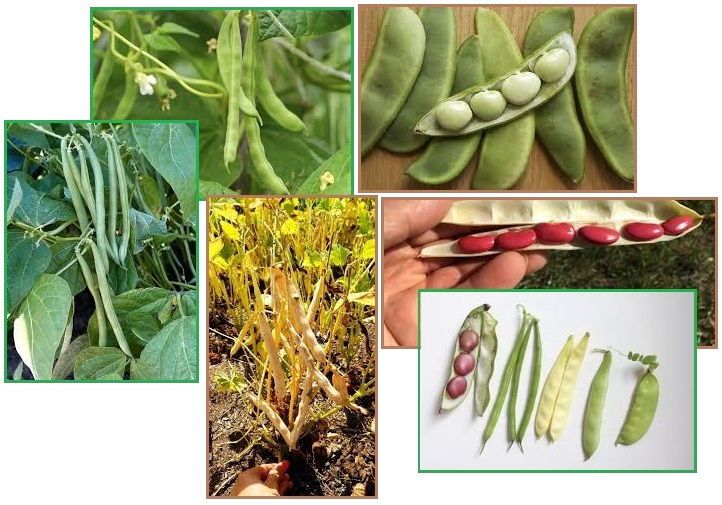
Perhaps the easiest garden vegies to grow are Beans and Legumes,
and every culture has recipes for them. Delicious, satisfying,
and a bit of protein too. Once again make sure the seeds you
harvest are very dry. Allow the plant to literally die from old
age to ensure maturity. One technique to get every last bit of
nutrition to the seeds is to hang the plant upside down,
draining the nutrients to the seeds. Beans are a hot weather
plant, and if you plant when the soil is wet and cool the seed
may molder in the ground.
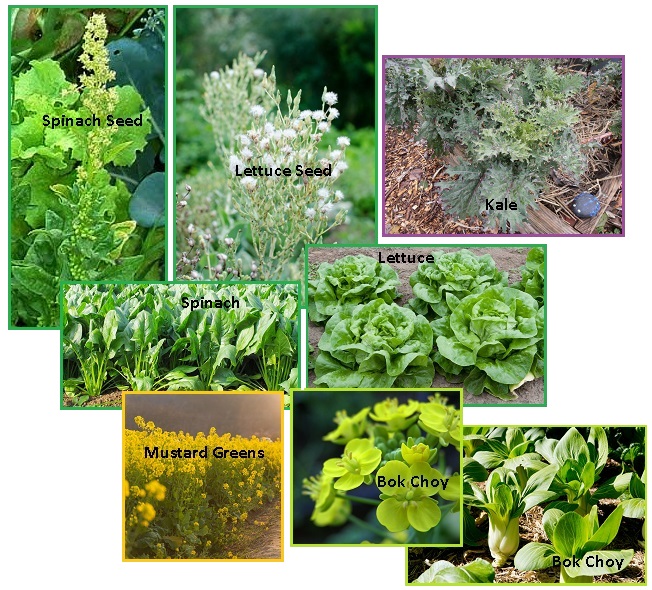
Salad greens or vegies to stir-fry or steam are also mostly
annuals, meaning they go to seed in their first year. This
category includes Lettuce, Spinach, Bok Choy, Mustard Greens and
Kale. Always collect seed from your best plants, passing along
their good genetics in this way. Lettuce is among those plants
that continually go to seed. One day you see a fluffy white
flower with immature seeds within, and a couple days later this
same flower has blown away in the wind. Harvest regularly.
Spinach is a bi-sexual plant, meaning one must have male and
female plants to produce fertile seeds. Harvest when the seed is
mature and dry.
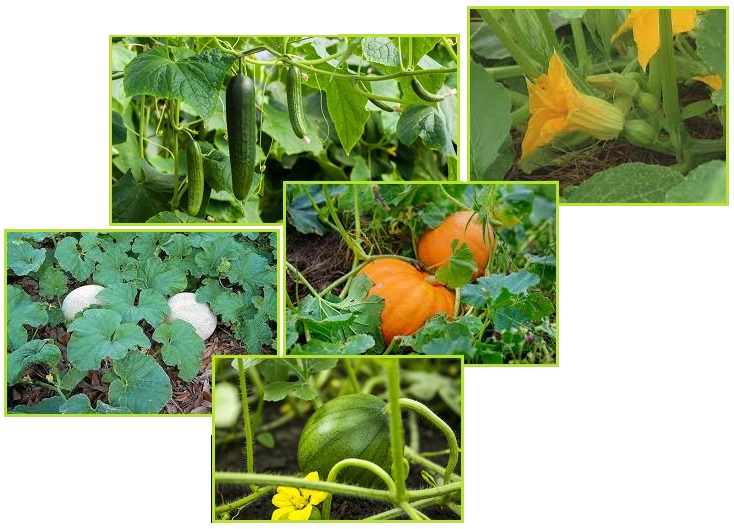
Melons, Squash, Cucumbers and Pumpkin are all fruits. Their
yellow flowers turn into the fruit after the flower has been
fertilized. In these days when bee colonies can be killed off,
allow all the other fertilizing insects to flourish. Ants, sweat
bees, anything that is crawling or buzzing around. They are your
friends. Winter Squash and Pumpkin are superior foods to store
in a cool cellar. They last for months and months. When
collecting seed from plants in this category, take from a very
ripe fruit, almost to the rotting point. Rinse the pulp from the
seeds, dry thoroughly, and store in a cool dry place.
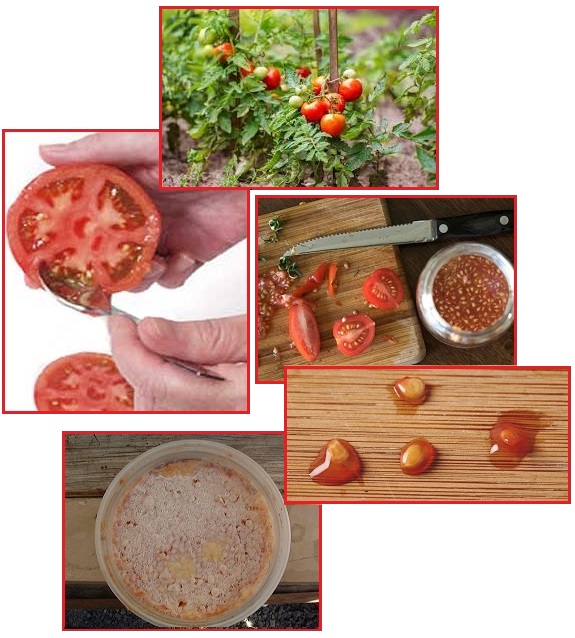
Tomatoes, and Tomato sauces, are so intrinsic to meals in so
many cultures they deserve their own spot on the seed saving
discussion, especially since effective seed saving requires an
odd practice. One must molder the seeds, to rid the seeds of the
slime that surrounds them inside the ripening Tomato. But can’t
you just rinse off the slime? Apparently, that will not work.
Even rinsed and dried, the Tomato seed still thinks it is in the
Tomato! So one must put the slimy seeds into a bowl with a
little water, and let sit until the bowl is covered with white
mold. The slime is eaten by mold. Then rinse, letting the
heavy mature seeds sink to the bottom of the bowl and the chaff
and mold flow off the top of the bowl. Then dry and store for
the next year.
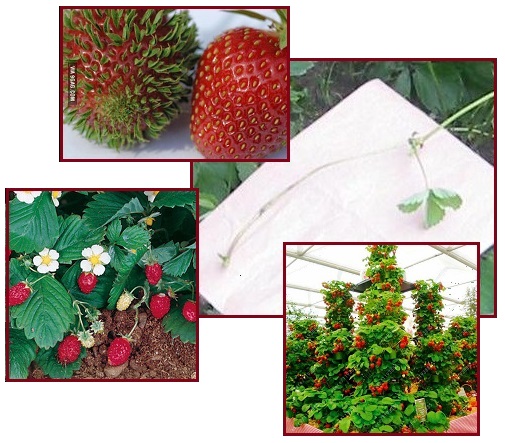
Strawberries also deserve a special mention, because Strawberry
plants never die and they never sleep! Seriously, they will grow
and produce berries 24 hours every day if given light. Thus
making them ideal for indoor gardens. They will also survive
harsh Winters, living on as a perennial. Strawberries also have
multiple ways of reproducing. They produce runners, with tiny
Strawberry plants at the end of each runner, seeking to put down
roots. Strawberries are covered on the outside by little seeds.
If in a warm humid environment, these seeds will sprout while
still on the Strawberry. One can take a slice off a store bought
Strawberry, lay that slice on some moist dirt, and voilà. Baby
Strawberry plants.
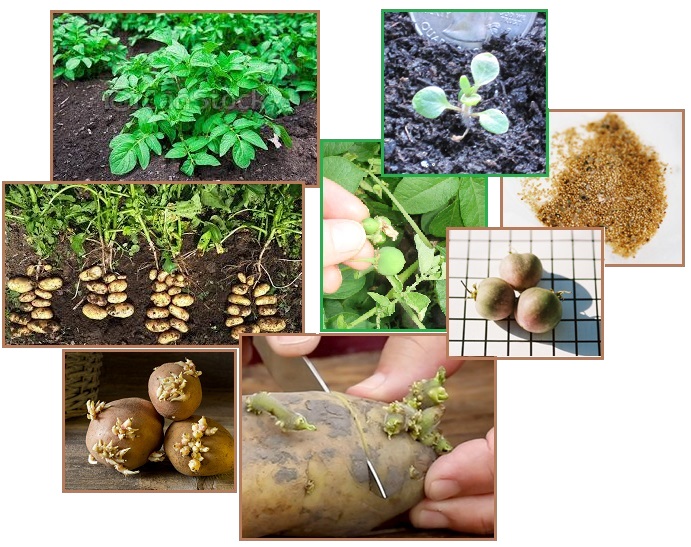
Potatoes also deserve a special mention, as what meal is
complete without Potatoes. Potatoes are usually grown from
cutting up old Potatoes that have been stored in the cool room,
so that each eye on a Potato has a portion of the Potato to give
it strength to grow. A bag of Potatoes in the kitchen will start
to sprout from the eyes. They don’t wait to be asked.
Potatoes can also be grown from the seed pods they produce. Dry
the pods well, and break them open to release the tiny seeds. Of
course this takes more time than planting Potato eyes.

Lysine rich plants like Amaranth and Buckwheat also deserve a
special mention, as growing them allows you to replace meat
protein with plant protein. Amaranth and Corn mixed together
gives one the equivalent of red meat. Legume plants such as Peas
also are high in lysine. These plants are annuals, so one only
needs to collect the seed and plant the next year. Buckwheat
seed stays with the flower pod and is easy to collect. The
Amaranth plant is entirely edible, and the leaves are just as
nutritious as the seeds. The seed plumes shed ripe seeds
continuously, so most would be lost unless one goes down the row
regularly and shakes the plume into an apron or sack. The tiny
seeds are long lived. An ancient S American plant which is a
gift to mankind.
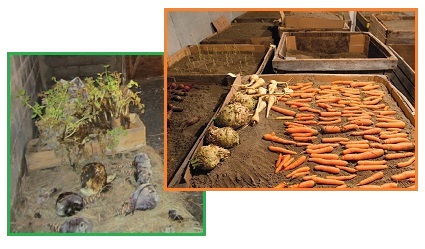
Almost half of the vegetables we eat are not annuals, they are
biennial seed producers, meaning they grow the first year, go
dormant over what is assumed to be a Winter, and then produce
seed the second year. The Cabbage family, Carrots, Beets, and
the Onion family including Leeks – all are biennials. This means
covering the plant with straw if in a temperate climate that
does not get a hard frost, or digging some seed stock plants up
and storing them in a root cellar. Seed production is prolific,
so many plants are not needed. The plants so stored need the
roots, with some soil or sand around them, but do not need much
vegetation above the roots.
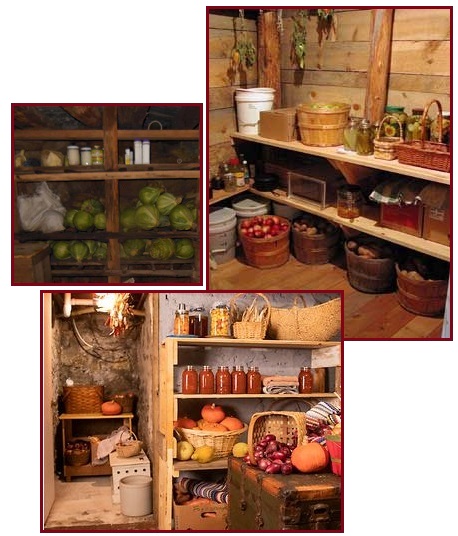
The term Root Cellar is old fashioned, from the days when seed
collection was a family business, or a family farm business.
Everyone did it. The Amish today rely heavily on Cabbage as a
staple. But using the basement or a cool room to store a harvest
over the Winter is likewise an old fashioned concept. The modern
shopper goes to the grocery store to buy Squash, Pumpkin,
Apples, Potatoes, and Cabbage. The Grocer ships these in from
warehouses that store these items at cool temperatures. So if
you have a Cool Room in your basement, then that can be used as
a Root Cellar too.
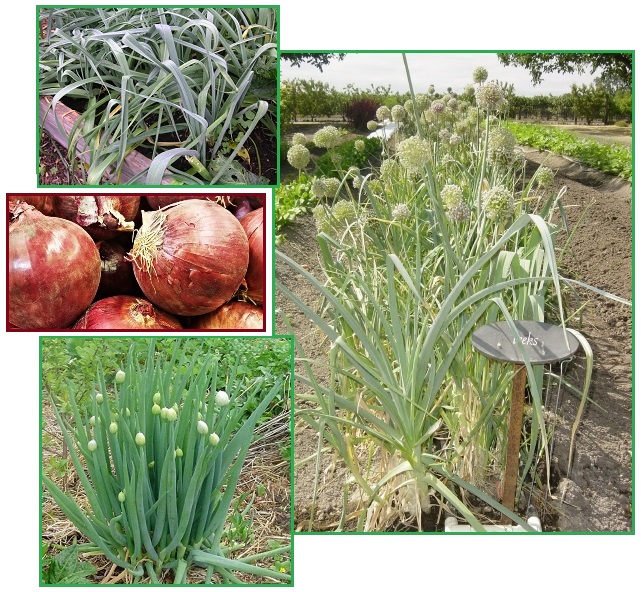
Onions are a biennial, so must winter over for seed. Each Onion
will produce beautiful white flower balls that become seed pods.
Just let dry and then shuck the little black seeds out. Leeks
likewise. Only the Gypsy Onion plant can winter over and
attempts to propagate by runners. Garlic has been domesticated
so long that its seed is often no longer viable. But Garlic can
produce black seeds from its flowers. An alternate means of
propagating is reproduction from cloves. Plant a clove in the
spring, and by late Fall that clove will have become a Garlic
bunch.
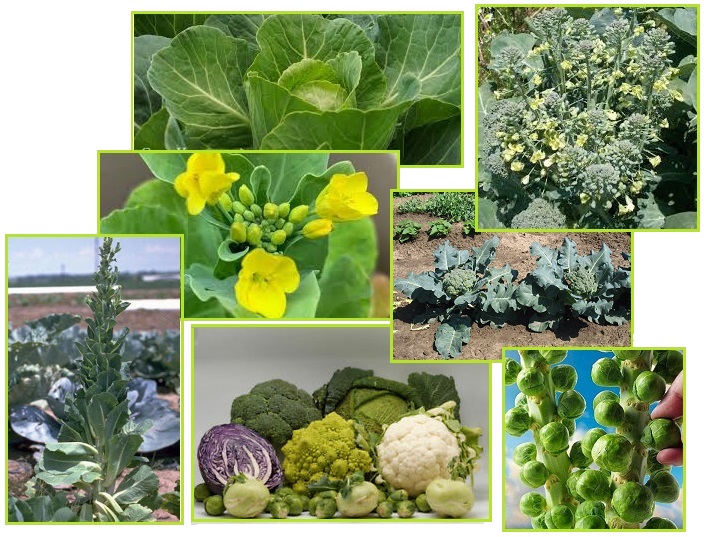
All Cabbage is biennial except for Bok Choy, the Chinese Cabbage
that is an annual. Green Cabbage, Brussels Sprouts, Broccoli,
Cauliflower – all must Winter over. Bring a few healthy plants
indoors, with roots attached, and cut back or prune the tops.
Keep roots covered in a cool dark place until spring. Transplant
outside in the Spring and up will come the seed stalks with
little yellow flowers. Harvest the pods when dry, putting inside
a cloth bag to dry. Do not allow the dry pods to shatter and
spill the seed.
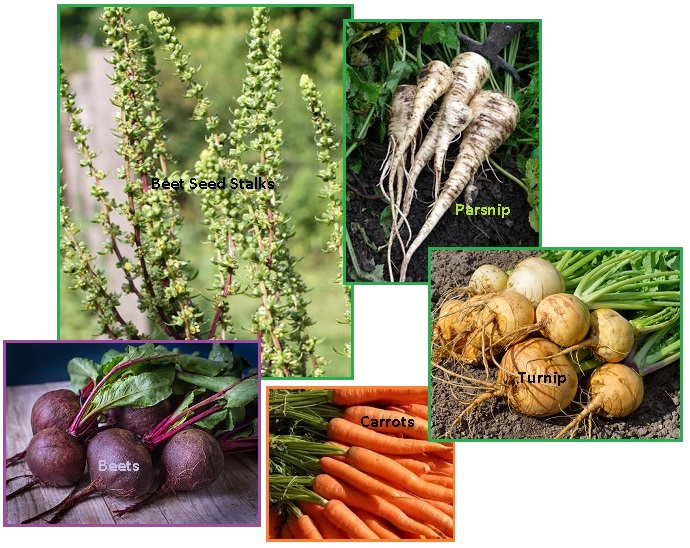
Carrots, Turnip, Beets, and Parsnip are root plants that are
also biennials. Beets are particularly nutritious and are
prolific seed producers. Radish also needs to Winter over. When
transplanting in the Spring, make sure the entire root is
covered. Other popular vegies that are biennial are the Chards
and Celery.
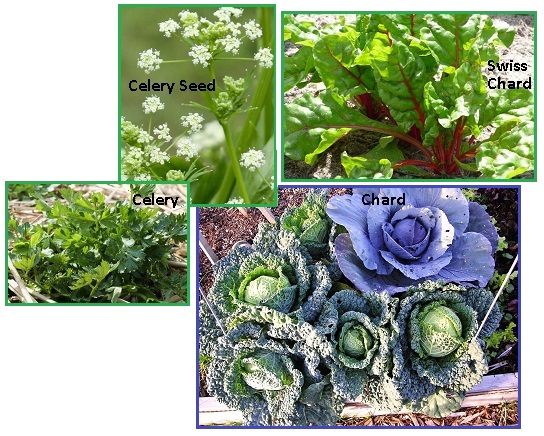
What have we not covered? Oh yes, the perennials. Plants that do
not die after a year, like the annuals, or die after their
second year when they go to seed, are called perennials. The
Rhubarb patch, famous for Rhubarb pie, and the Asparagus patch.
Horseradish, Ginger Root, and Artichoke are all perennial once
established. These plants do produce seed, but a gardener
normally establishes a patch by getting a chunk of the plant,
with well-established roots, from a vendor or neighbor.
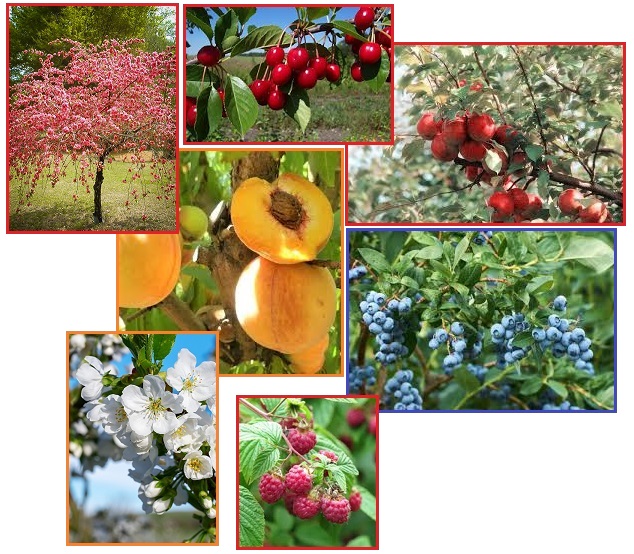
Berry bushes, like Raspberry, Blueberry, or Blackberry are also
perennials. They lob over branches that are called vines that
will produce new plants where they touch the ground, thus the
infamous berry thicket. Aggressive pruning of deadwood is
required to prevent a thicket from forming. Fruit trees like
Apple, Peach, Cherry and Plumb can be established from seed,
salvaged from the fruit sold at the grocer, or by buying young
trees from a vendor. They are covered in flowers in the Spring,
and each flower becomes a fruit. Nut trees likewise can be
established in this manner.
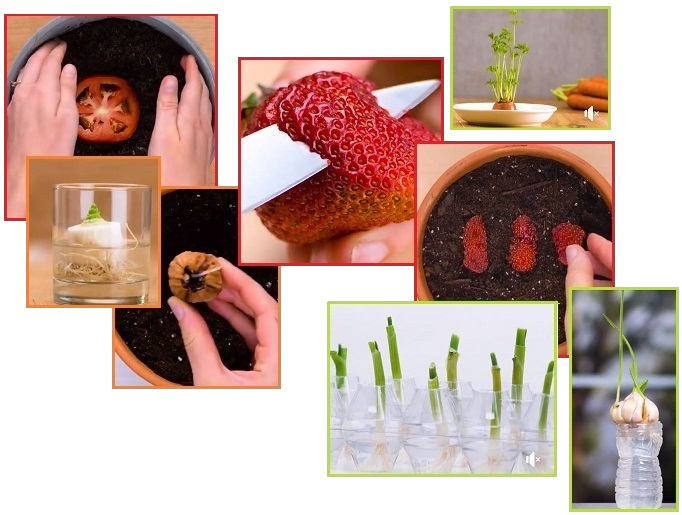
If you find yourself in a situation where you cannot buy seed,
as many found this past Spring during the pandemic lockdowns,
then consider jumping into seed saving by planting a cutting
from the grocer. Get a bag of soil and jump start your gardening
skills. Cloning goes by many names, such as cuttings. To
reproduce a Grape vine, cut a stem and put the bottom part in
water. Rooting solution helps to encourage this process, but
technically not needed. Roots form on the bottom and then the
cutting is planted. One can start a Strawberry patch from a
slice of a Strawberry. Or get seed from some Green Onions placed
in water. Or root a Garlic clove or a piece of Potato. Then from
this living plant, seed production can start.
|

